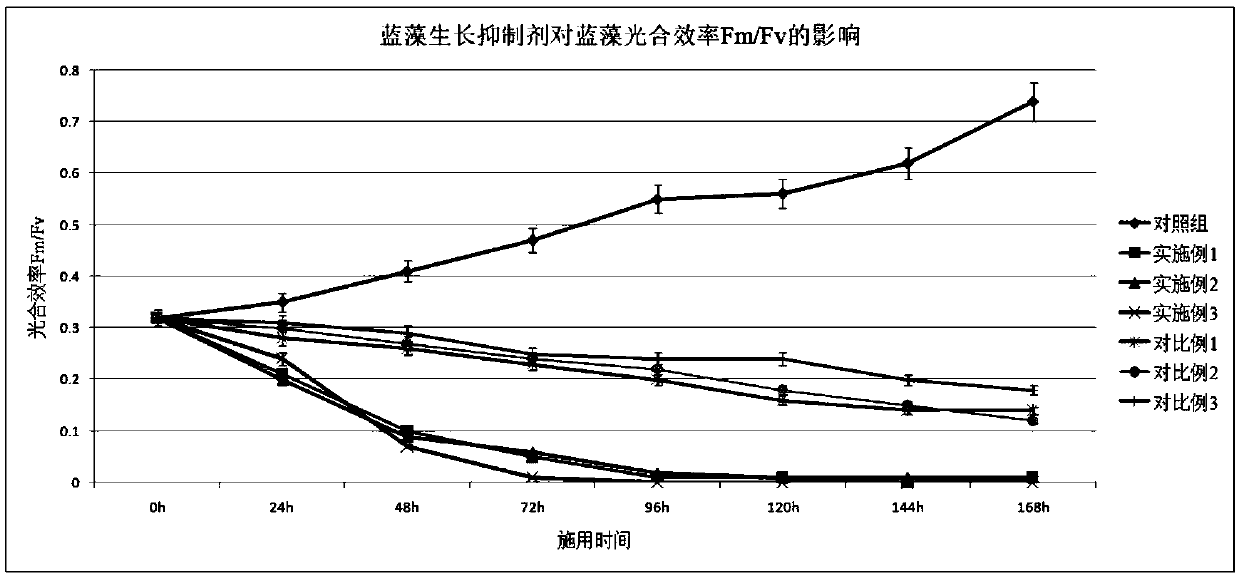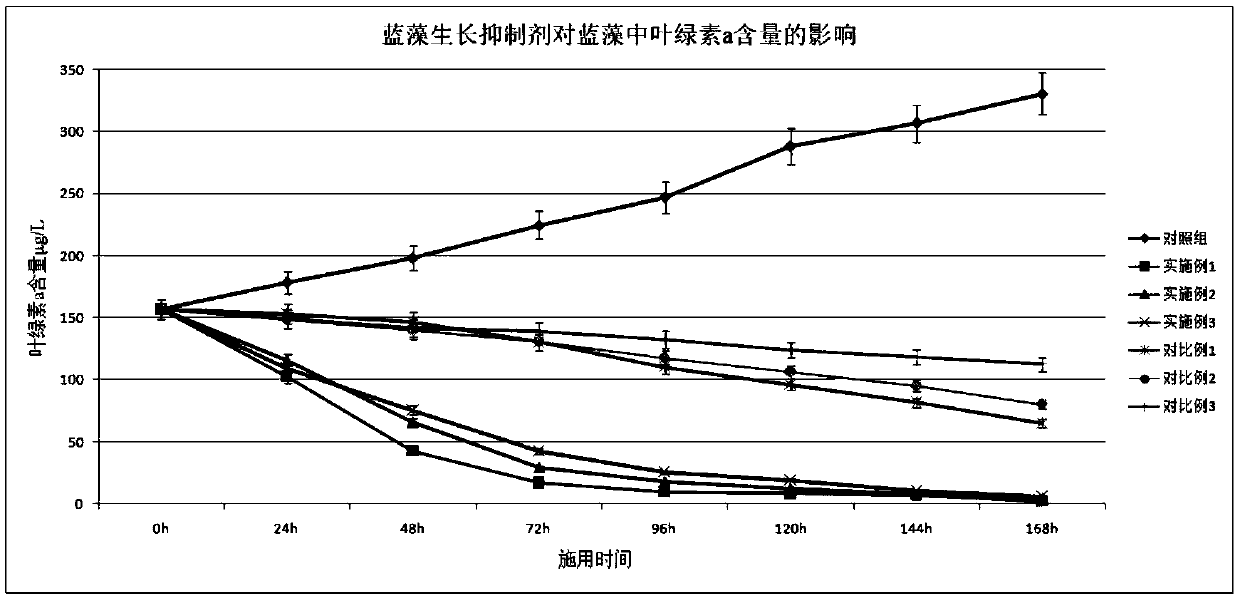Blue-green algae growth inhibitor
A growth inhibitor and inhibitor technology, applied in the field of water pollution treatment, can solve problems such as fishery and aquaculture hazards, and achieve the effects of strengthening inhibition, convenient operation, and strengthening mass transfer and exchange.
- Summary
- Abstract
- Description
- Claims
- Application Information
AI Technical Summary
Problems solved by technology
Method used
Image
Examples
Embodiment 1
[0056] A cyanobacteria growth inhibitor, which comprises accounting for the total weight of the inhibitor:
[0057] 80% by weight of modified bentonite; and
[0058] 19 wt% terephthalates, and
[0059] 1wt% volatile oil of calamus calamus. The cyanobacteria growth inhibitor helps to inhibit the growth of cyanobacteria, which denatures the membrane protein of cyanobacteria, enhances the permeability of cells, leaks the contents of the cells, loses the function of cell division until the cells die, so as to achieve the purpose of inhibiting cyanobacteria; it can also inhibit the growth of cyanobacteria. Cause stress, promote the production of a large number of free radicals in cyanobacteria cells, and make the free radical scavenging system of cyanobacteria cells exceed the body's self-repair threshold, destroy cells, and finally inhibit the growth of cyanobacteria; inhibitors can also inhibit the tricarboxylic acid cycle of cyanobacteria cells, Thereby reducing the metabolic ...
Embodiment 2
[0072] A method for inhibiting the growth of cyanobacteria, comprising: adding terephthalic acid ester and volatile oil of calamus calamus into modified bentonite, and coupling treatment to inhibit the growth of cyanobacteria.
[0073] In the method for inhibiting the growth of cyanobacteria, the proportion of the modified bentonite is 98.99wt%, the proportion of the terephthalic acid ester is 1wt%, and the proportion of the volatile oil of Acorus calamus is 0.01wt%, The three together constitute a cyanobacterial growth inhibitor. The cyanobacteria growth inhibitor helps to inhibit the growth of cyanobacteria, which denatures the membrane protein of cyanobacteria, enhances the permeability of cells, leaks the contents of the cells, loses the function of cell division until the cells die, so as to achieve the purpose of inhibiting cyanobacteria; it can also inhibit the growth of cyanobacteria. Cause stress, promote the production of a large number of free radicals in cyanobacte...
Embodiment 3
[0100] A cyanobacteria growth inhibitor, which comprises accounting for the total weight of the inhibitor:
[0101] 95% by weight modified bentonite; and
[0102] 4.5% by weight of terephthalates, and
[0103] 0.5wt% volatile oil of Acorus calamus. The cyanobacteria growth inhibitor helps to inhibit the growth of cyanobacteria, which denatures the membrane protein of cyanobacteria, enhances the permeability of cells, leaks the contents of the cells, loses the function of cell division until the cells die, so as to achieve the purpose of inhibiting cyanobacteria; it can also inhibit the growth of cyanobacteria. Cause stress, promote the production of a large number of free radicals in cyanobacteria cells, and make the free radical scavenging system of cyanobacteria cells exceed the body's self-repair threshold, destroy cells, and finally inhibit the growth of cyanobacteria; inhibitors can also inhibit the tricarboxylic acid cycle of cyanobacteria cells, Thereby reducing the m...
PUM
 Login to View More
Login to View More Abstract
Description
Claims
Application Information
 Login to View More
Login to View More - R&D
- Intellectual Property
- Life Sciences
- Materials
- Tech Scout
- Unparalleled Data Quality
- Higher Quality Content
- 60% Fewer Hallucinations
Browse by: Latest US Patents, China's latest patents, Technical Efficacy Thesaurus, Application Domain, Technology Topic, Popular Technical Reports.
© 2025 PatSnap. All rights reserved.Legal|Privacy policy|Modern Slavery Act Transparency Statement|Sitemap|About US| Contact US: help@patsnap.com


